Psychology
Cheerleader Effect

image source: dwilliss/flickr
Pro-tip for non-photogenic people: You'll look better in a group photo than on your own. This is known as the Cheerleader Effect, and it's been scientifically verified. From medicalxpress.com:
Participants rated the attractiveness of faces presented in a group and individually. Regardless of gender, attractiveness ratings were higher when people were presented in a group compared to presented individually.
However, this does not mean the bigger the group—the more attractive you are. The authors found that group size, whether 4, 9, or 16 individuals, had no effect on attractiveness ratings. Basically, a handful of friends is all you need to take advantage of this effect.
Importantly, studies have shown the cheerleader effect to be reliable. Additional studies published in 2015 and one just this month continue to find a groups' attractiveness is significantly higher than the attractiveness of an individual group member.
Posted By: Alex - Sun Mar 04, 2018 -
Comments (2)
Category: Beauty, Ugliness and Other Aesthetic Issues, Psychology
Hypnotizing the voters
Nick Belluso, while running for governor of Georgia in 1978, came up with the idea of hypnotizing the voters to vote for him. So he hired a hypnotist and created a TV ad which went as follows:Hypnotist: Do not be afraid. I am placing the name of Nick Belluso in your subconscious mind. You will remember this. You will vote on Election Day. You will vote Nick Belluso for governor. You will remember this. You will vote on Election Day. You will vote Nick Belluso for governor.
However, Belluso's scheme was foiled when every TV station but one refused to run the ad, fearing the hypnosis might actually work, which would open them up to potential legal liabilities.
So Belluso lost the election. Though he subsequently became a perennial candidate running for many offices, including President of the United States in 1980.
You can see most of the ad in the clip below.
Also worth noting: Belluso claimed he had been endorsed by "The Force."
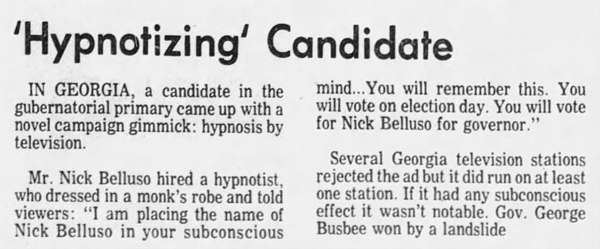
The Nashville Tennessean - Aug 11, 1978

Posted By: Alex - Thu Jan 25, 2018 -
Comments (2)
Category: Hypnotism, Mesmerism and Mind Control, Politics, Psychology, 1970s
Dr. Blatz’s Trick Chair of Terror
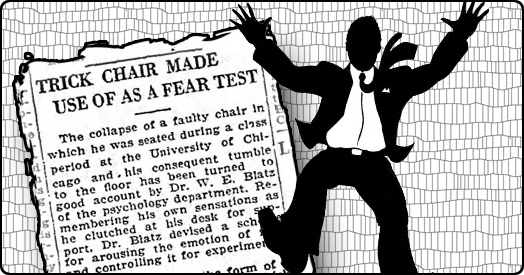
While he was a grad student at the University of Chicago in the early 1920s, William Blatz was sitting in class one day, leaning back in his chair, when suddenly the chair collapsed beneath him, sending him sprawling backwards, crying out in fright. The experience was unsettling, but it gave him an idea for an unusual psychology experiment.
He designed a trick chair that would collapse backwards without warning when he flipped an electric switch. The chair was padded, so its occupant wouldn't get hurt. But Blatz figured that the sensation of abruptly, unexpectedly falling backwards would provoke a strong, measurable reaction in subjects. This would allow him to study the physiology of fear under controlled, repeatable conditions. He performed his experiment on a series of unsuspecting victims.
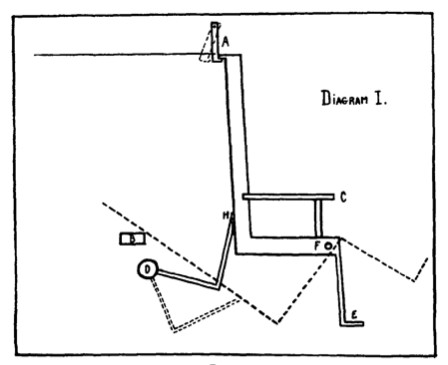
Diagram of Blatz's trick chair.
When the hook (A) at the top was released, the chair plunged backwards.
More in extended >>
Posted By: Alex - Tue Dec 26, 2017 -
Comments (2)
Category: Experiments, Psychology, 1920s
Personal body space
As the population increases, we will all have to learn to accept strangers on the street standing very close to us.According to recently collected facts, there were three basic reactions: (1) He-she slowly backed away as the interviewer got closer, (2) He-she struck a defensive pose such as folding arms, looking down, or even turning to one side, and (3) No reaction, though most people do have some kind of reaction...
According to Mark, most people have this "wall" about 18 inches around them that excludes all people from entering. What the interviewers were doing when they moved closer to the person was violating personal body space, causing them to react.
Steve says, "It's a shame this happens because as our world gets more and more crowded, we'll have to get closer together. Let's all start getting closer together and break down that wall."
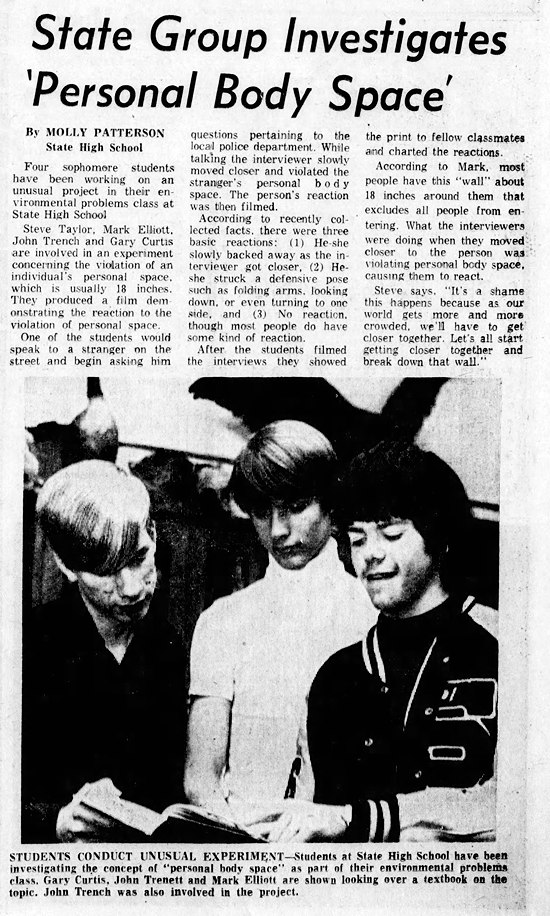
Terre Haute Tribune - Mar 31, 1974
Posted By: Alex - Mon Dec 18, 2017 -
Comments (5)
Category: Experiments, Psychology, 1970s
Service for smiles
Given an equal choice, will a store clerk first serve a smiling or a frowning customer?Science provides the answer. Clerks go toward the smiler.
Maybe this is why it's so hard to ever get help in Home Depot. I need to be grinning more.
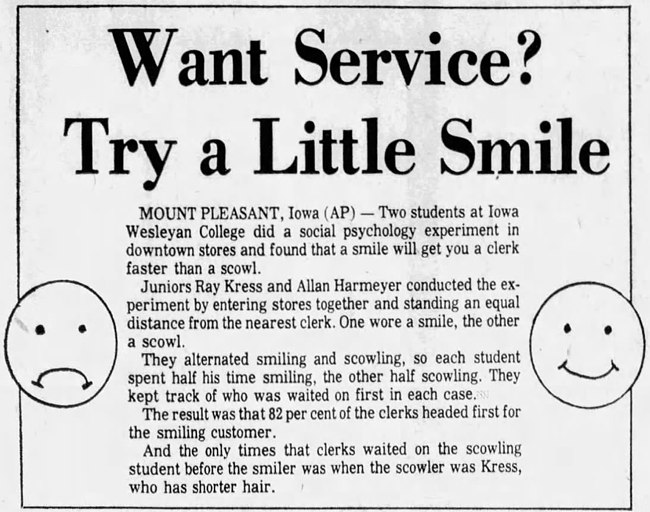
Elmira Star Gazette - Dec 11, 1972
Posted By: Alex - Thu Nov 30, 2017 -
Comments (3)
Category: Science, Psychology, Shopping
Bikini Experiment
So why was Simone Harris standing on a Sydney street in a bikini? Was this a publicity stunt? Was she a psychologist conducting research? A performance artist being weird? I haven't been able to find answers anywhere.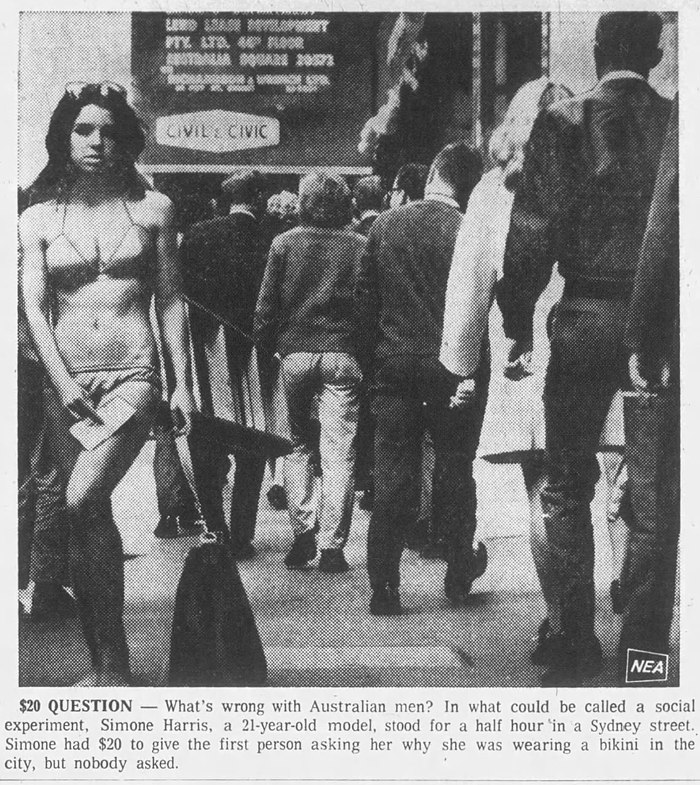
Racine Journal Times - June 17, 1970
Posted By: Alex - Wed Nov 15, 2017 -
Comments (2)
Category: Experiments, Psychology, 1970s
Air Raid Noise Experiment
These pictures in the Google Arts picture archive don't come with any explanatory text, except that they're from an "Air Raid Noise Experiment" conducted in Nuneaton in 1941. But I suspect that the experiment was part of a series of psychological experiments conducted in the UK in 1941 that attempted to "harden Britons to bomb shock." The idea was to expose people to the sounds of air raid sirens and battle sounds so that they would lose their fear of them. As described in the news clipping below: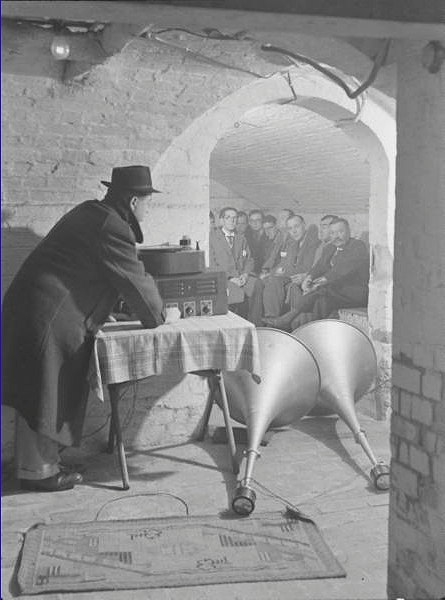
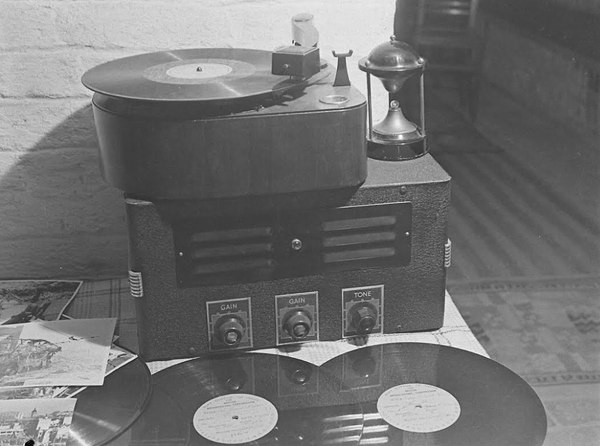
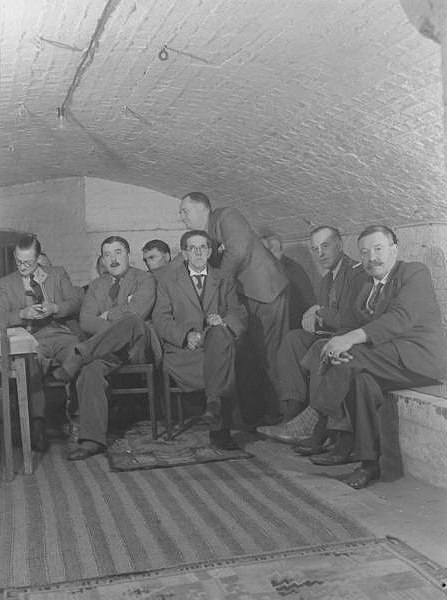
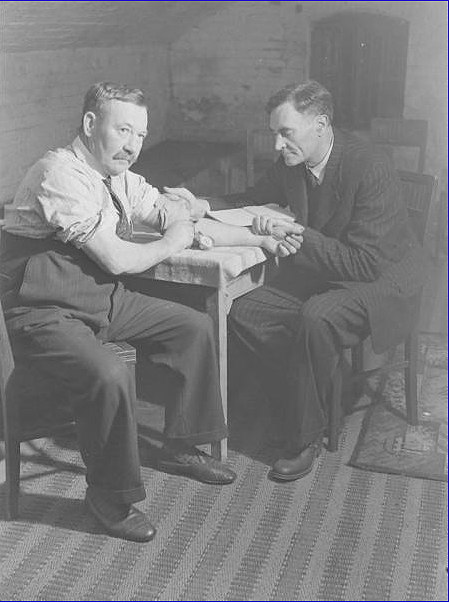
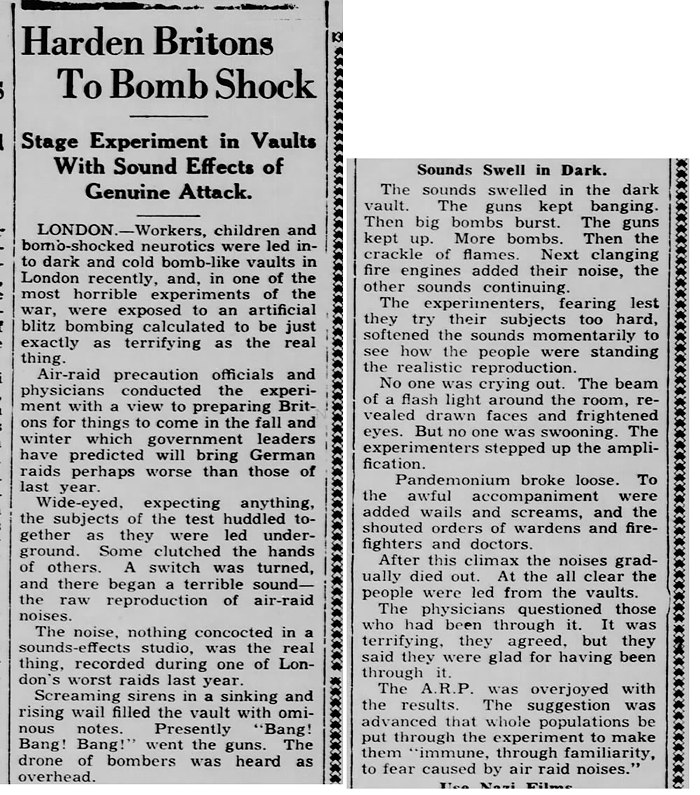
The Greenfield Daily Reporter - Nov 28 1941
I've been aware of these experiments for a while. I previously posted something about them back in 2009. But I just came across these photos and realized they must be from one of these experiments.
Posted By: Alex - Thu Nov 02, 2017 -
Comments (2)
Category: Noises and Other Public Disturbances of the Peace, War, Experiments, Psychology, 1940s
Naked Chicken Research
1976: Drs. William Johnson and Robert Truax of Louisiana State University raised and studied featherless chickens."I guess 'embarrassed' is as good a word for it as any. You put one of them in with a flock of normal birds, and it huddles off in a corner by itself. The other birds won't have anything to do with it until they get used to it," he said.
"And then they're just not as active sexually. They will court and strut much more than the normal bird, but they don't mate as readily."
The story reminds me of the old urban legend about KFC raising mutant, featherless chickens. Maybe this is where the story started.

Argus Leader - Aug 31, 1976

Salisbury Daily Times - Aug 31, 1976
Posted By: Alex - Fri Sep 29, 2017 -
Comments (4)
Category: Animals, Science, Psychology, 1970s
Conditioning experiment on Soviet child
I ran across these intriguing images in an old copy of Newsweek - March 28, 1960.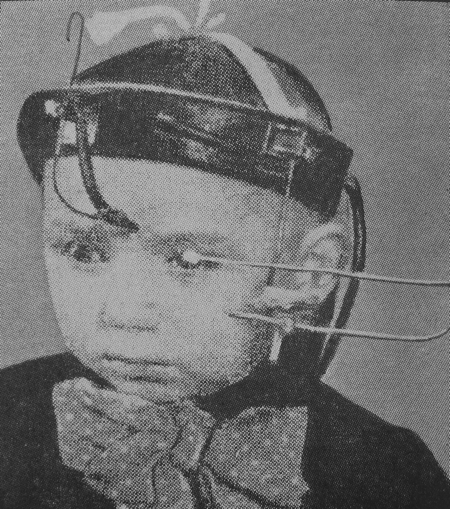
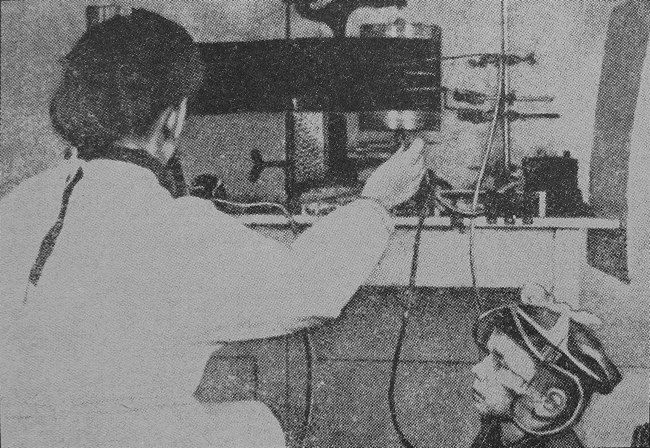
Unfortunately there wasn't much explanation about them. The caption read: "Psychological sputnik: Year-old Soviet child rigged for conditioning experiment."
An accompanying article, about the visit of Soviet psychologist Alexander R. Luria to the U.S., didn't refer to the images at all. But offered this hint:
Luria's own goal and the goal of Soviet psychopedagogy, is important, too: Increasing the learning ability of Soviet children by 25 per cent.
"Think of it," he said, "such a finding would be worth billions of dollars. It is no less important than a sputnik."
So the images must be showing some kind of weird Soviet experiment to boost a child's IQ.
The kid would be too young to be Putin. Though there is a slight resemblance.
Posted By: Alex - Thu Jul 27, 2017 -
Comments (3)
Category: Psychology, 1960s
The Bowery-el Phenomenon
Psychologists have found that a person can easily become habituated to a repeated stimulus. But if the stimulus is removed, its absence can itself be perceived as a kind of phantom stimulus. This is known as the "Bowery-el phenomenon" — named after the Bowery el (or Third Avenue el), the elevated rail line that used to run through New York City. The cognitive scientist Karl Pribram explained the term in a Jan 1969 Scientific American article, "The Neurophysiology of Remembering":And there's a slightly fuller description at indiana.edu:
The indiana.edu article says the flurry of calls occurred in the 1960s, but I think they must be mistaken, since the Bowery el was torn down in 1955.

The Bowery el, aka Third Avenue el. Image via wikipedia
Posted By: Alex - Sat Jun 03, 2017 -
Comments (2)
Category: Psychology

| Who We Are |
|---|
| Alex Boese Alex is the creator and curator of the Museum of Hoaxes. He's also the author of various weird, non-fiction, science-themed books such as Elephants on Acid and Psychedelic Apes. Paul Di Filippo Paul has been paid to put weird ideas into fictional form for over thirty years, in his career as a noted science fiction writer. He has recently begun blogging on many curious topics with three fellow writers at The Inferior 4+1. Contact Us |




